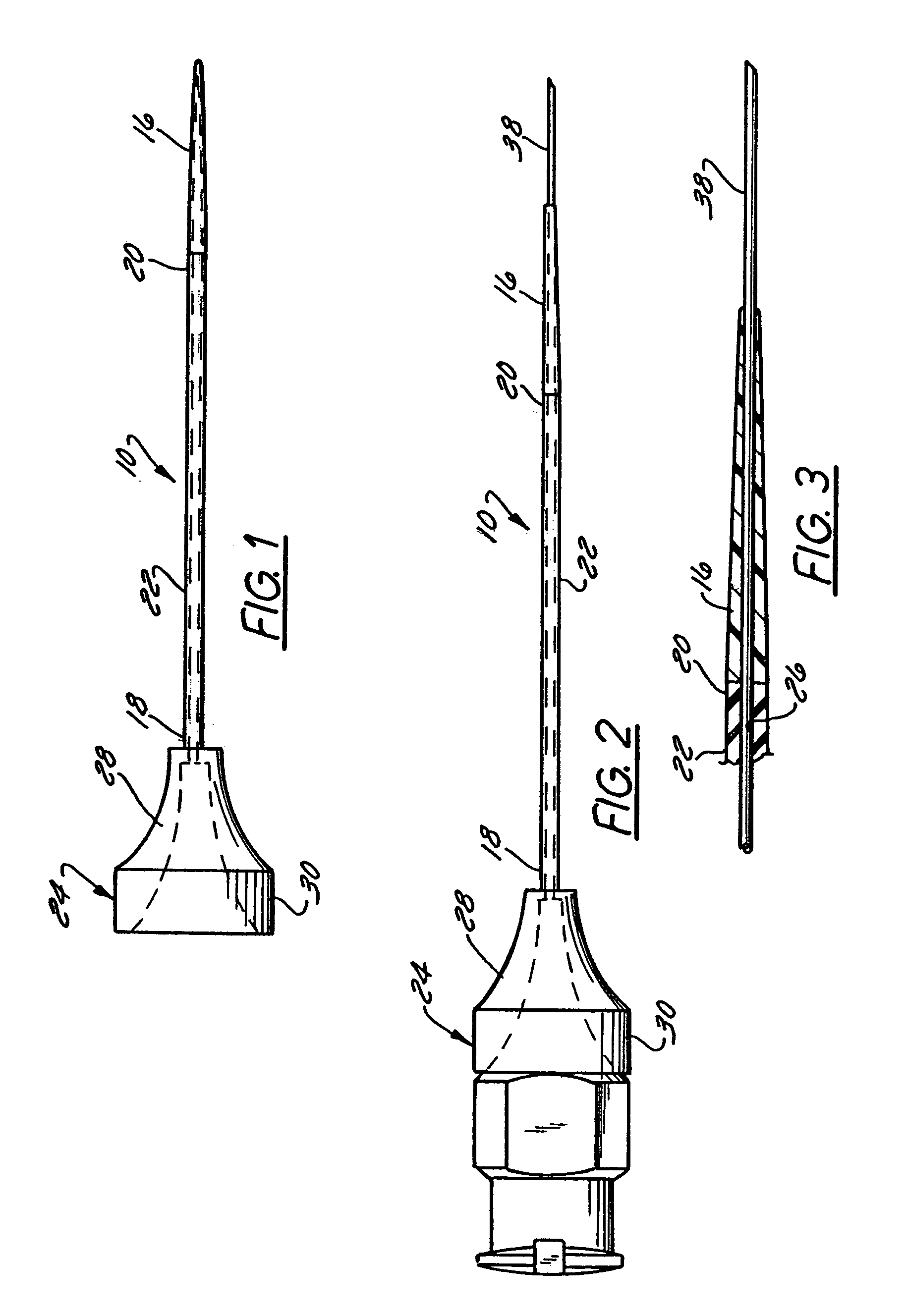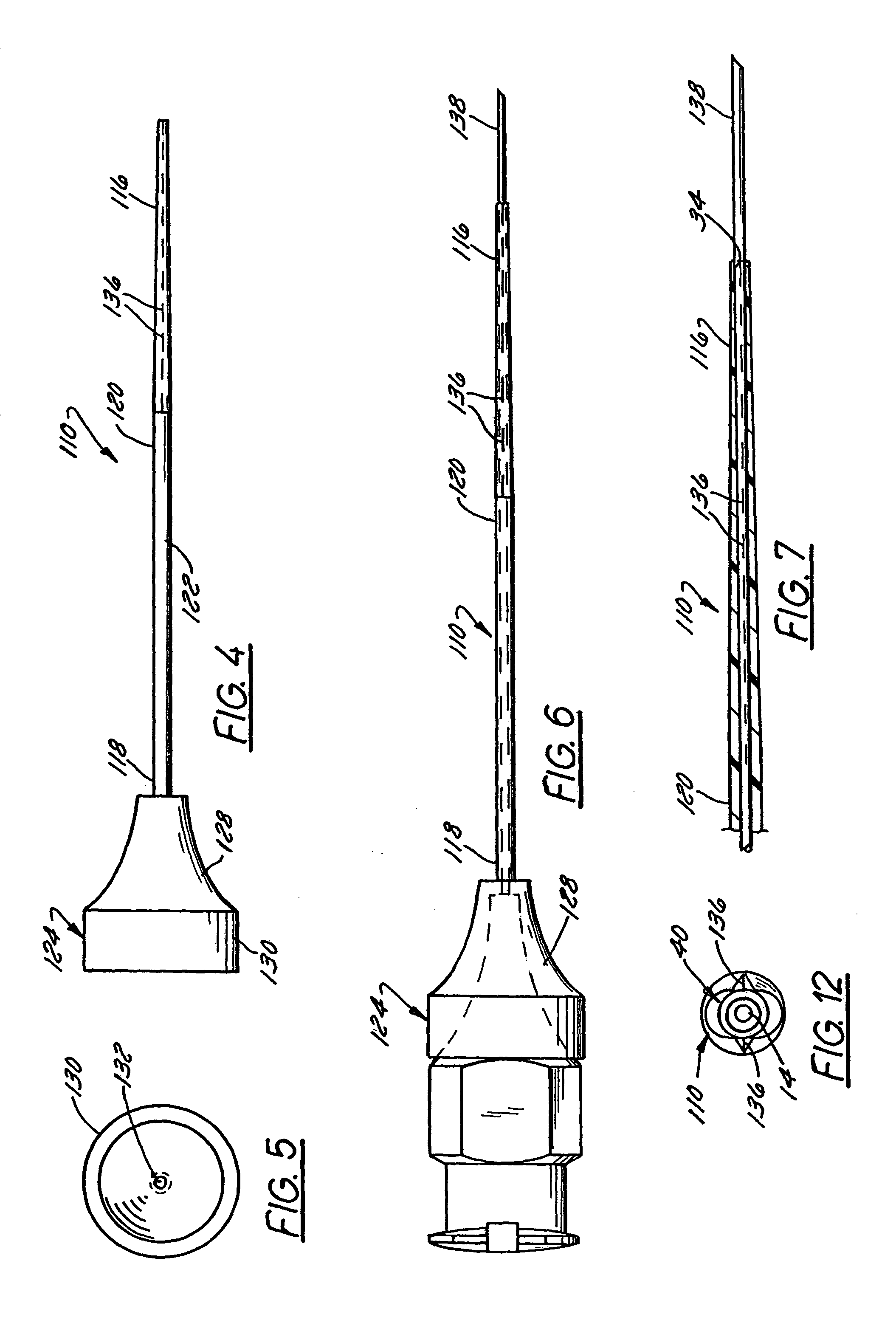Catheter introducer having an expandable tip
a catheter and expandable technology, applied in the field of medical devices, can solve the problems of formation of the spiral fold tip, and the complex construction of the catheter introducer, and achieve the effects of simple construction, small initial tip diameter, and reduced manufacturing cos
- Summary
- Abstract
- Description
- Claims
- Application Information
AI Technical Summary
Benefits of technology
Problems solved by technology
Method used
Image
Examples
first embodiment
[0059]Referring now to FIGS. 4–7, a catheter introducer 110 is illustrated that differs from the catheter introducer 10 of the first embodiment primarily in that it has a different type of expandable tip 116. Elements of the catheter introducer 110 of FIGS. 4–7 corresponding to elements of the introducer 10 of FIGS. 1–3 are, accordingly, designated by the same reference numerals, incremented by 100. The introducer 110 therefore includes a body 122, a hub 124, and a tip 116.
[0060]In this preferred embodiment, the expandable catheter tip 116 is made of the same material as the catheter body 122, and the continuous and non-convoluted catheter tip 116 includes score lines 136 that extend partially or completely through the depth of the catheter tip 116. The material of the body and tip may, for example, comprise polytetrafluorethylene (PTFE), FEP, or PE. The score lines 136 weaken the structural integrity of the catheter tip 116 so as to permit the catheter tip 116 to expand or even spl...
second embodiment
[0063]Referring now to FIGS. 13–20, a catheter introducer 210 is illustrated that differs from the catheter introducer 110 of the second embodiment primarily in that it has a different type of expandable tip 216. Elements of the catheter introducer 210 of FIGS. 13–20 corresponding to elements of the introducer 110 of FIGS. 4–7 are, accordingly, designated by the same reference numerals, incremented by 100. The introducer 210 therefore includes a body 222, a hub 224, and a tip 216. The tip 216 is about ½″ long and tapered as described above, preferably having a maximum inner diameter (ID) of about 0.04″ at its proximal end 254 and a minimum ID of about 0.031 at its distal end 252. The tip 216 also has one or more axially extending weakened portions 236 that split when a larger diameter object is threaded through the catheter introducer 210. The catheter introducer 210 preferably includes two weakened portions 236 offset by 180°, although other offsets are possible. In addition, less ...
PUM
 Login to View More
Login to View More Abstract
Description
Claims
Application Information
 Login to View More
Login to View More - R&D
- Intellectual Property
- Life Sciences
- Materials
- Tech Scout
- Unparalleled Data Quality
- Higher Quality Content
- 60% Fewer Hallucinations
Browse by: Latest US Patents, China's latest patents, Technical Efficacy Thesaurus, Application Domain, Technology Topic, Popular Technical Reports.
© 2025 PatSnap. All rights reserved.Legal|Privacy policy|Modern Slavery Act Transparency Statement|Sitemap|About US| Contact US: help@patsnap.com



